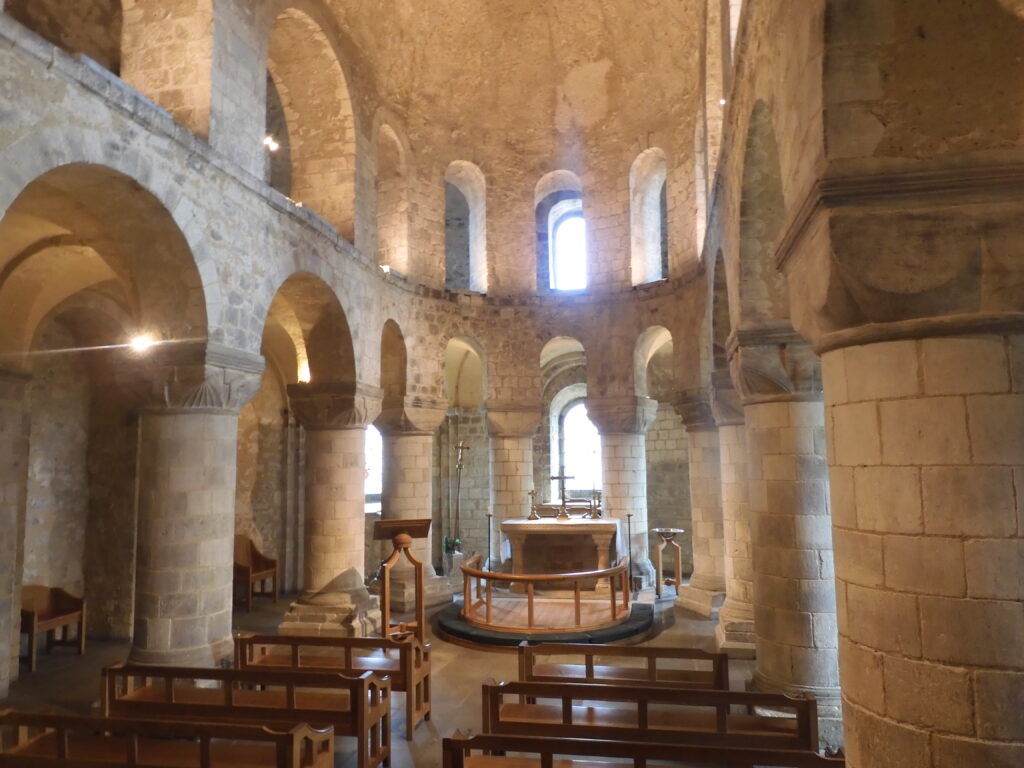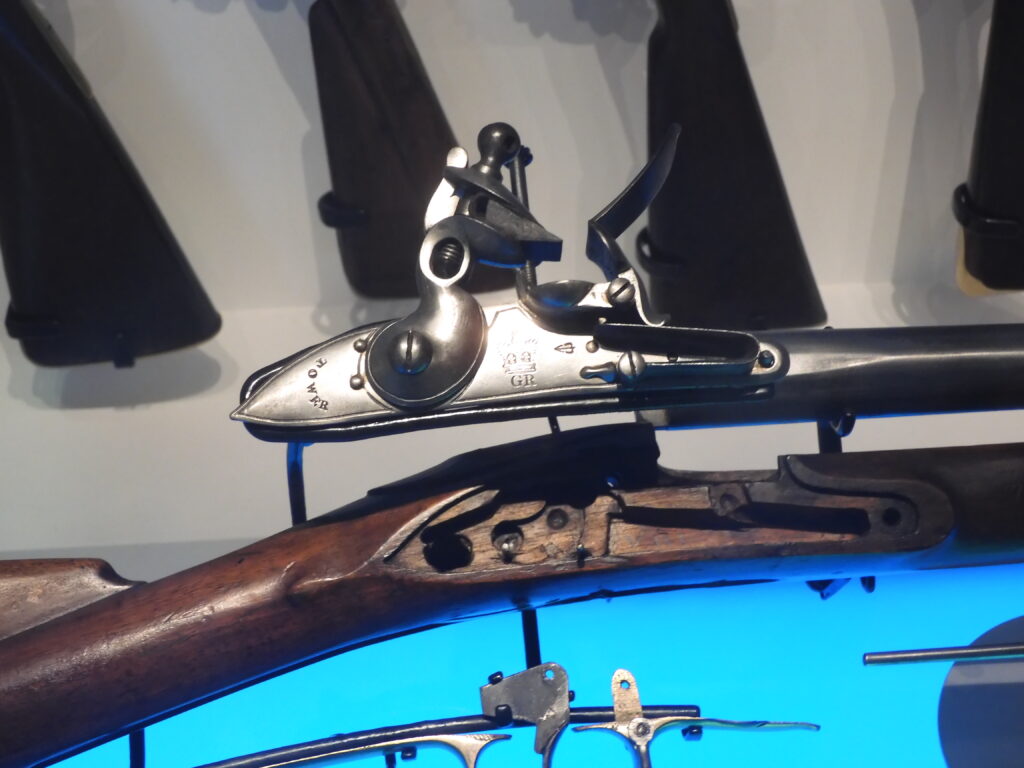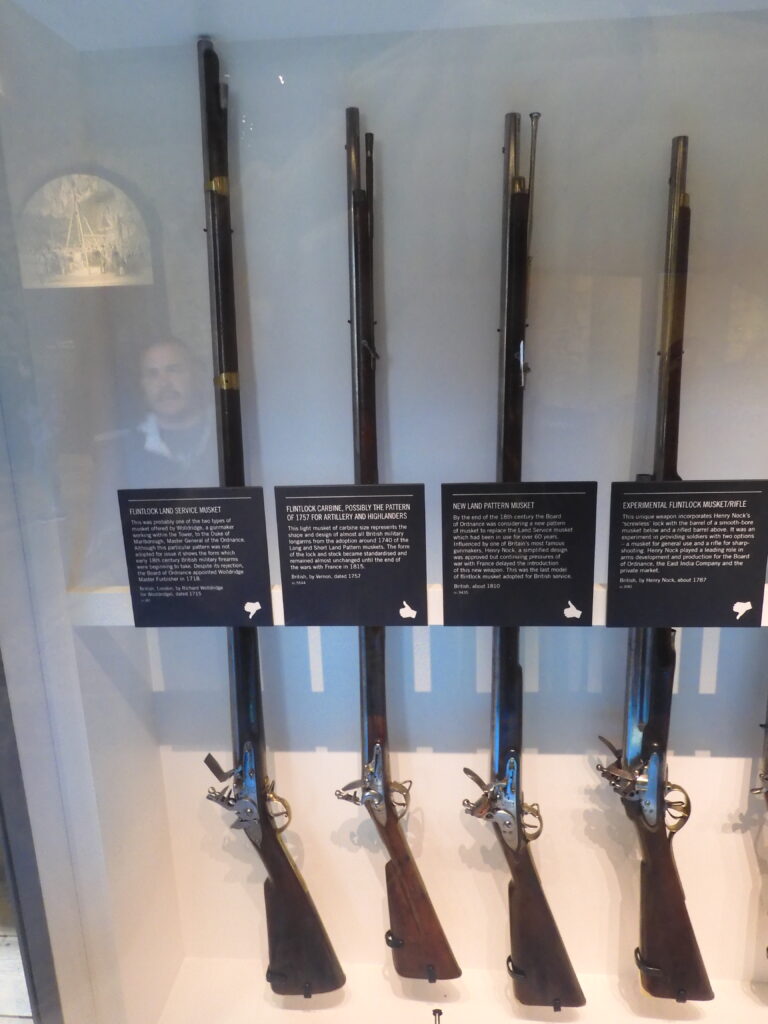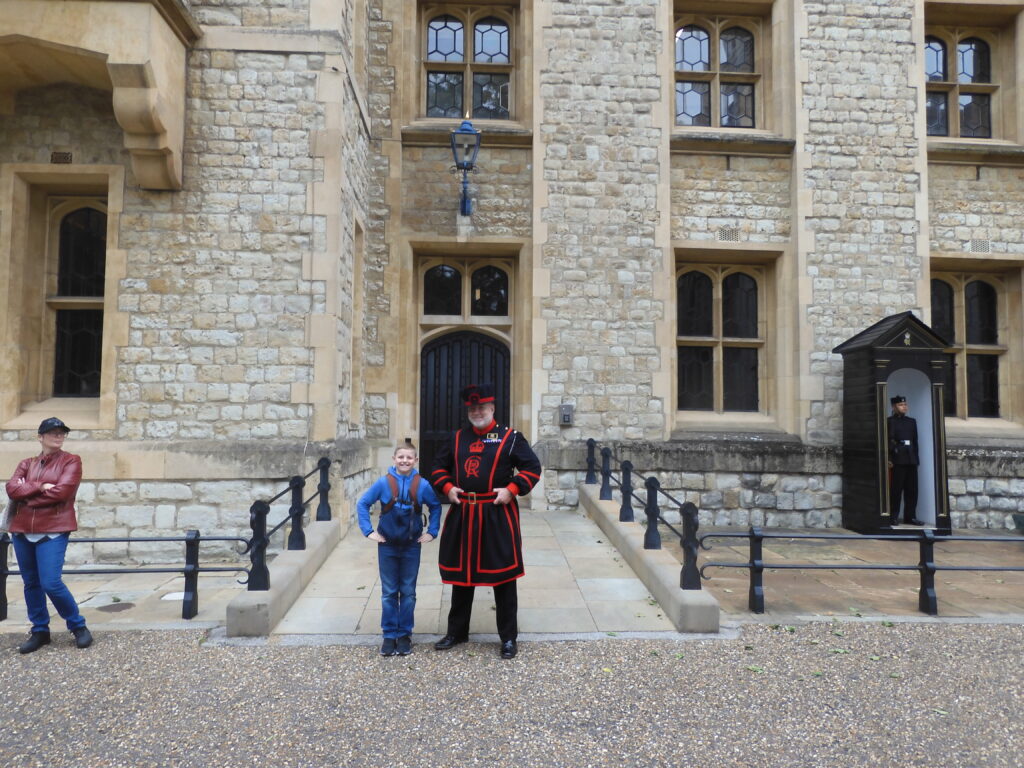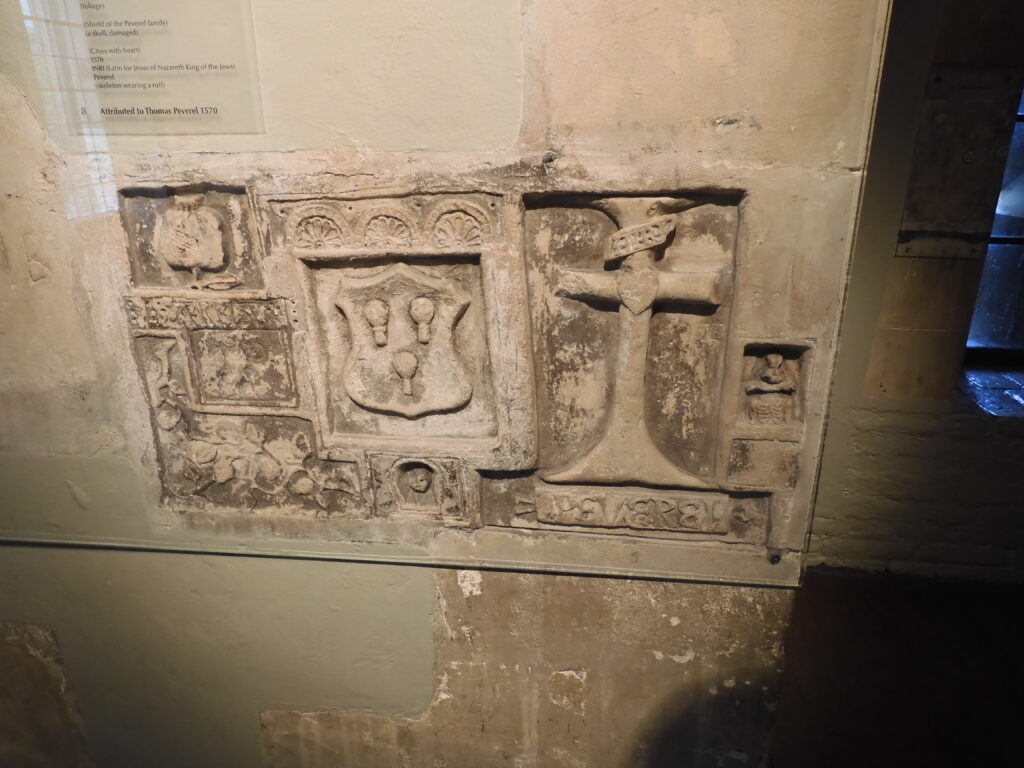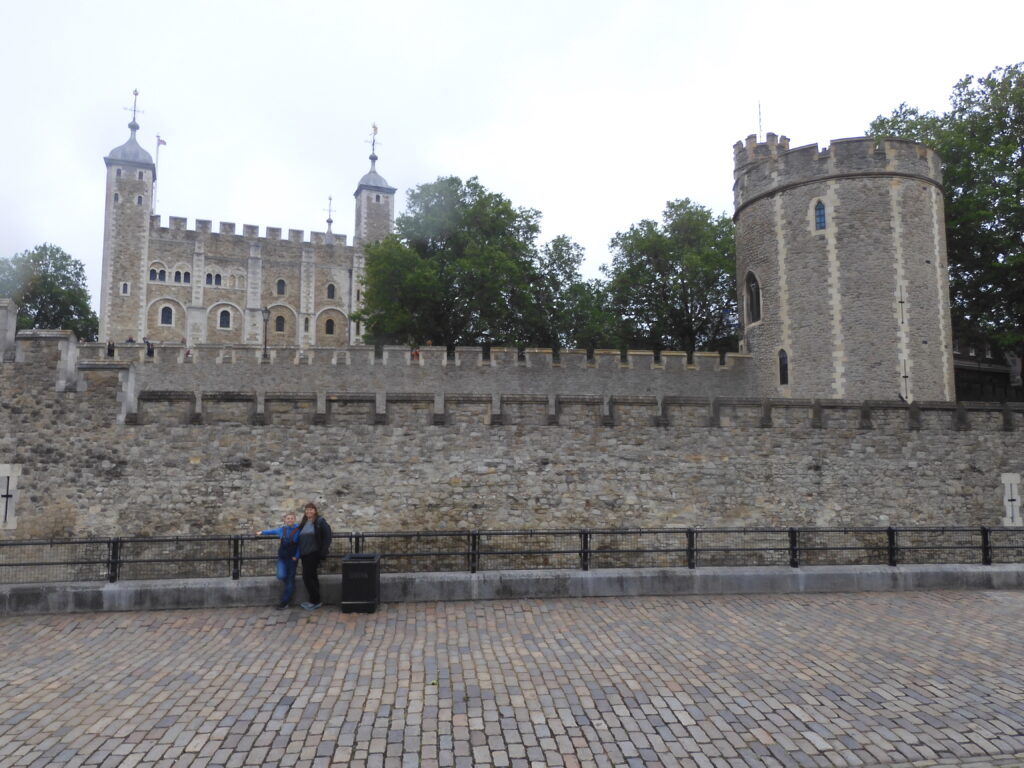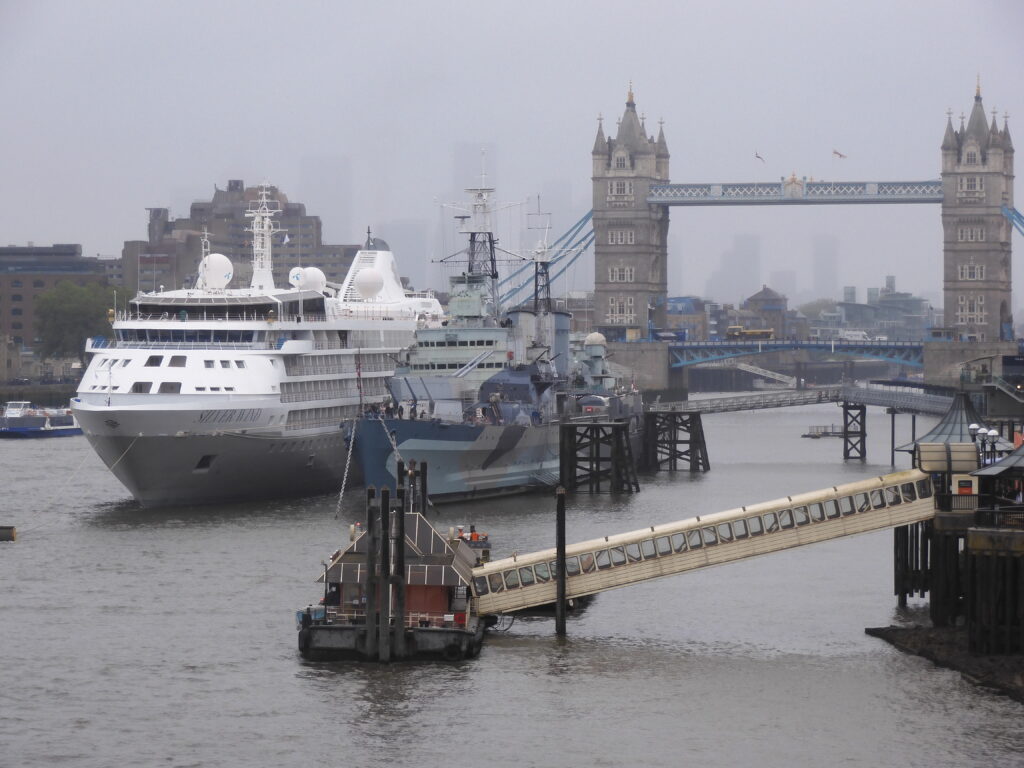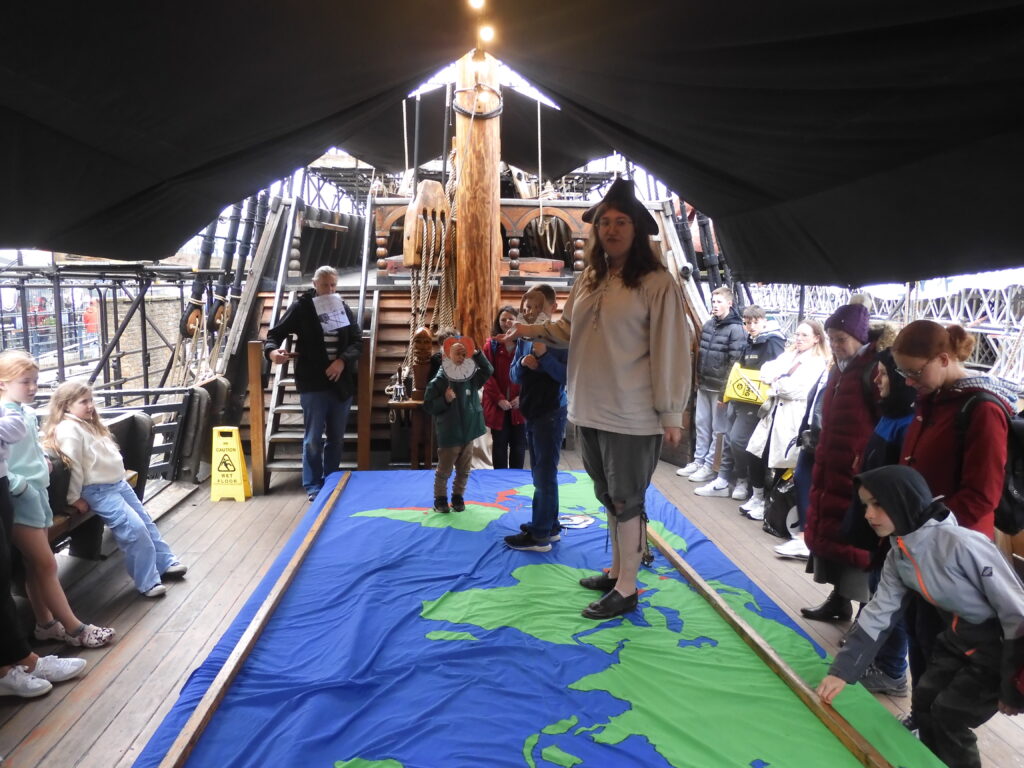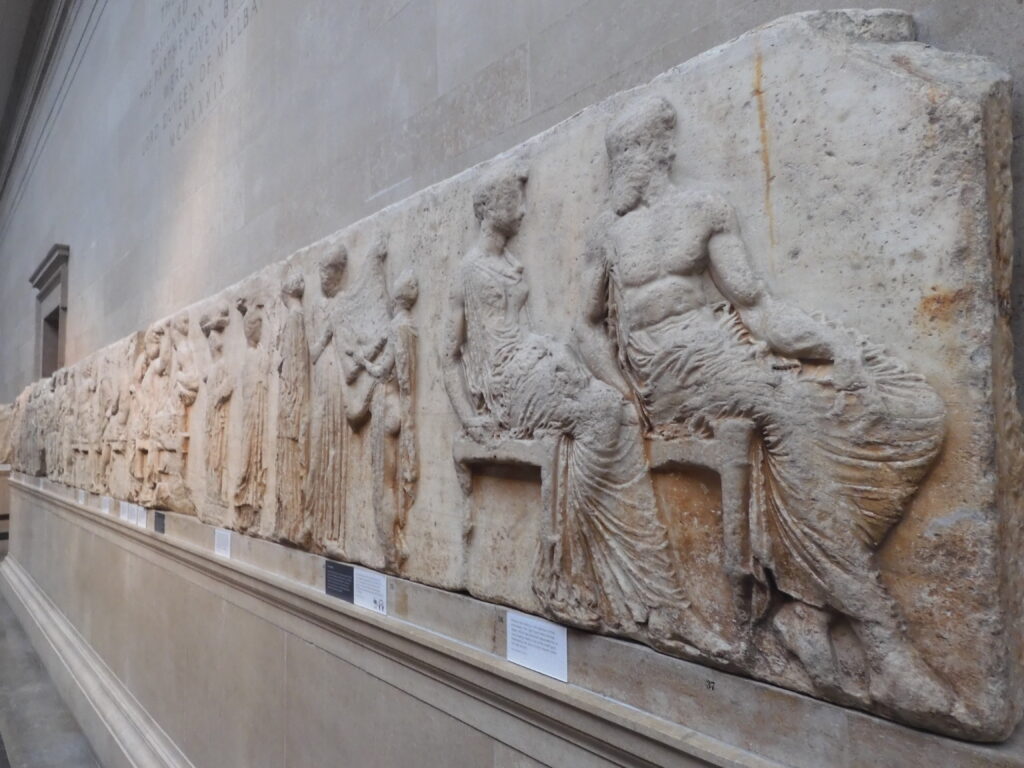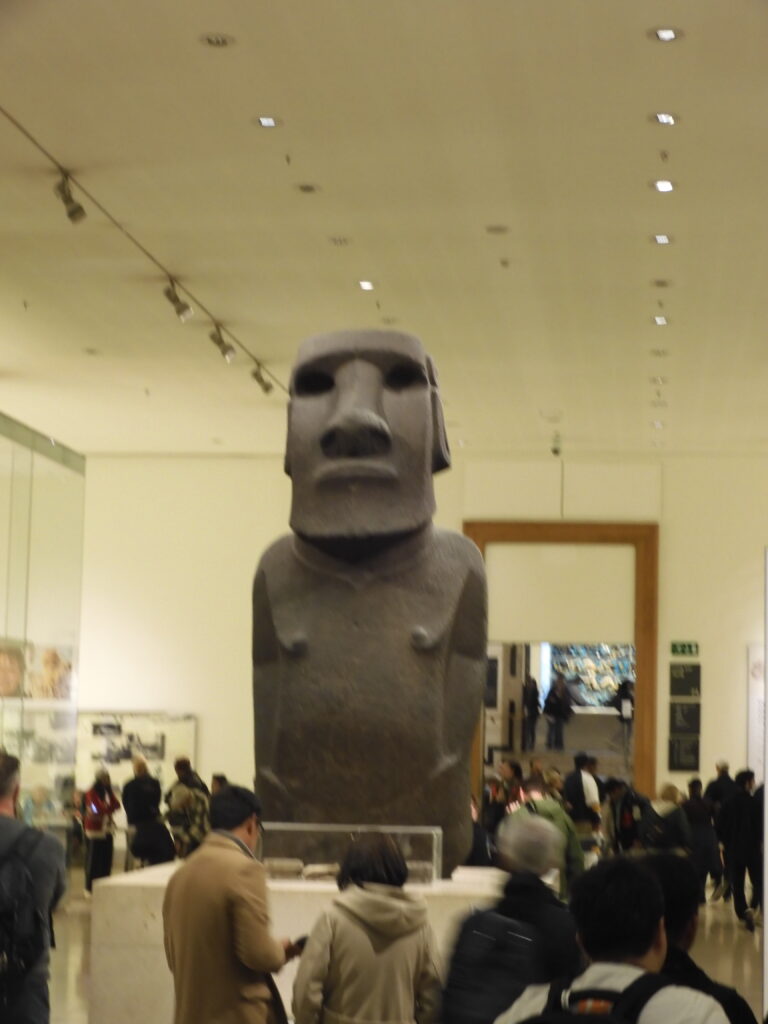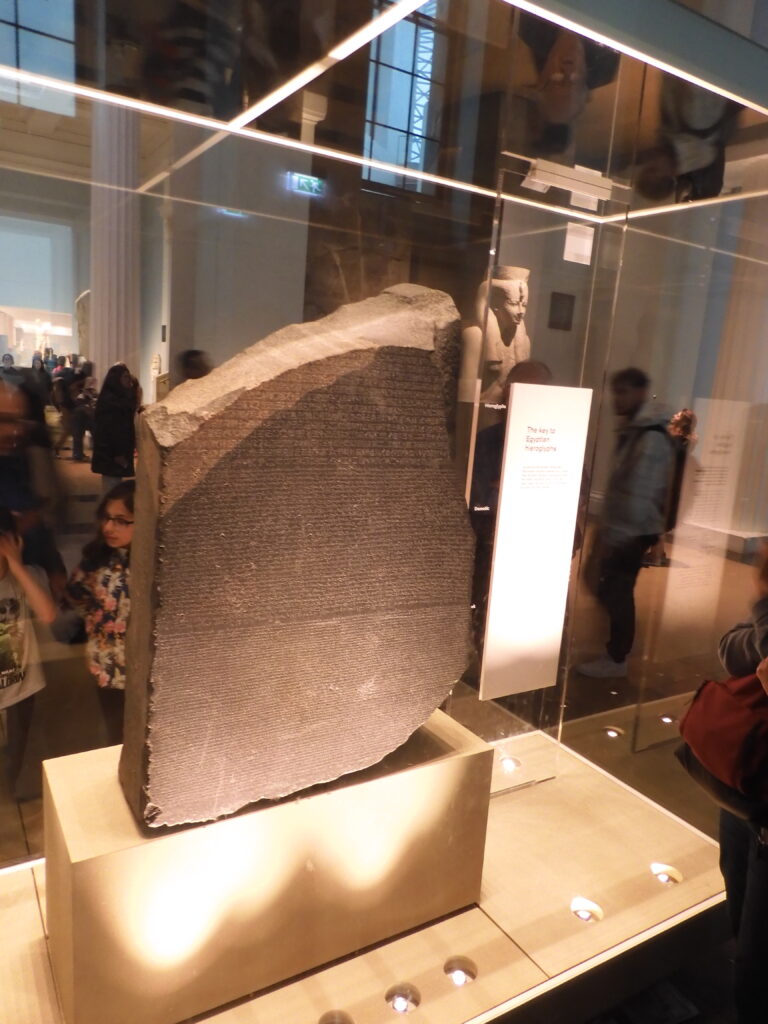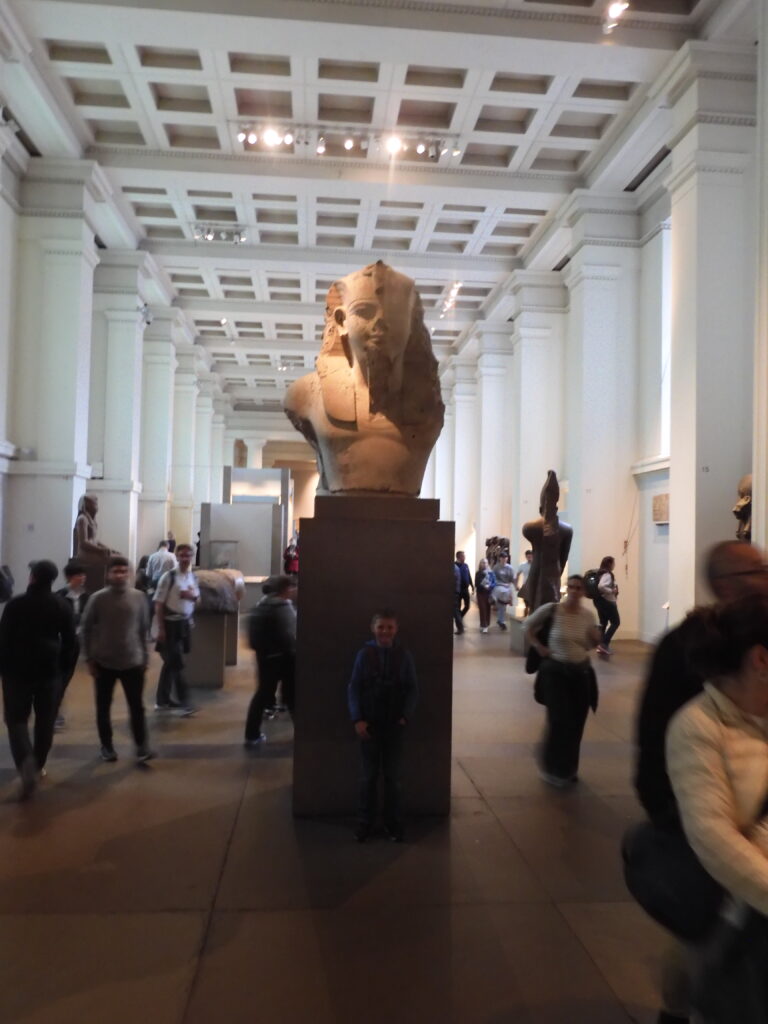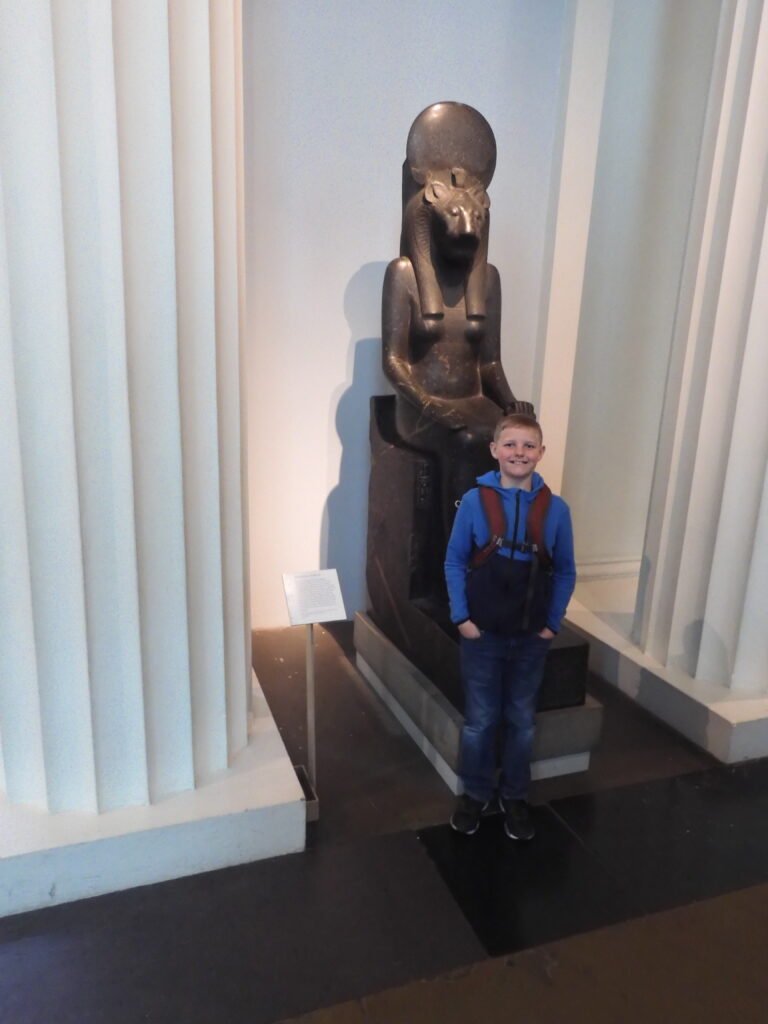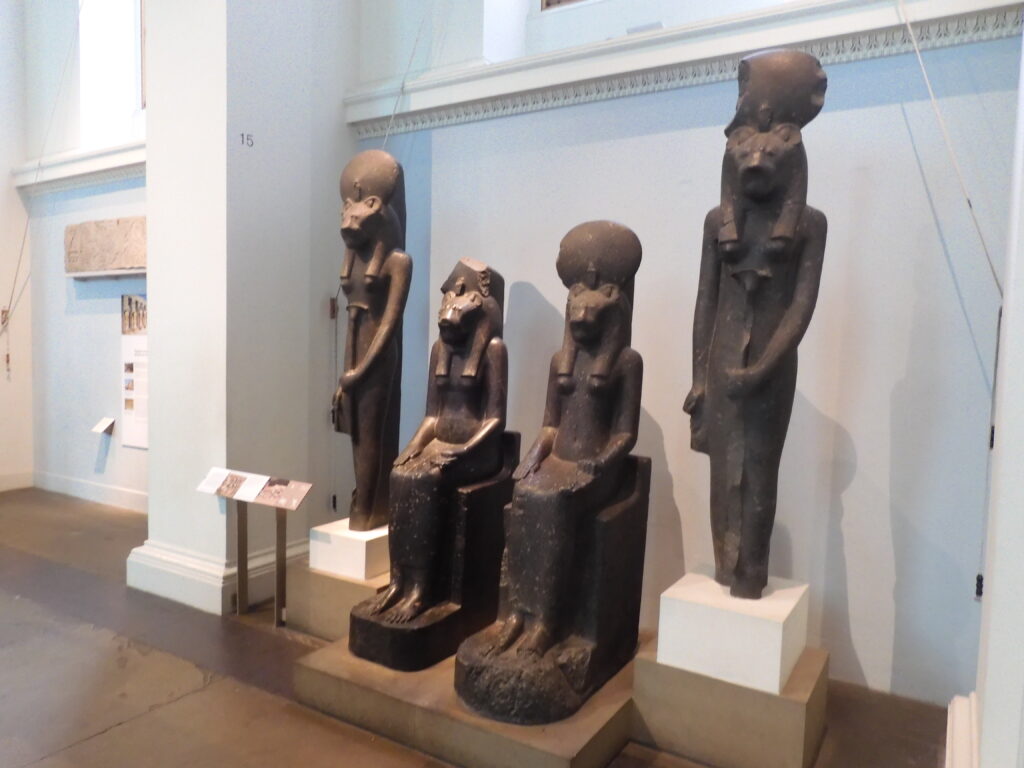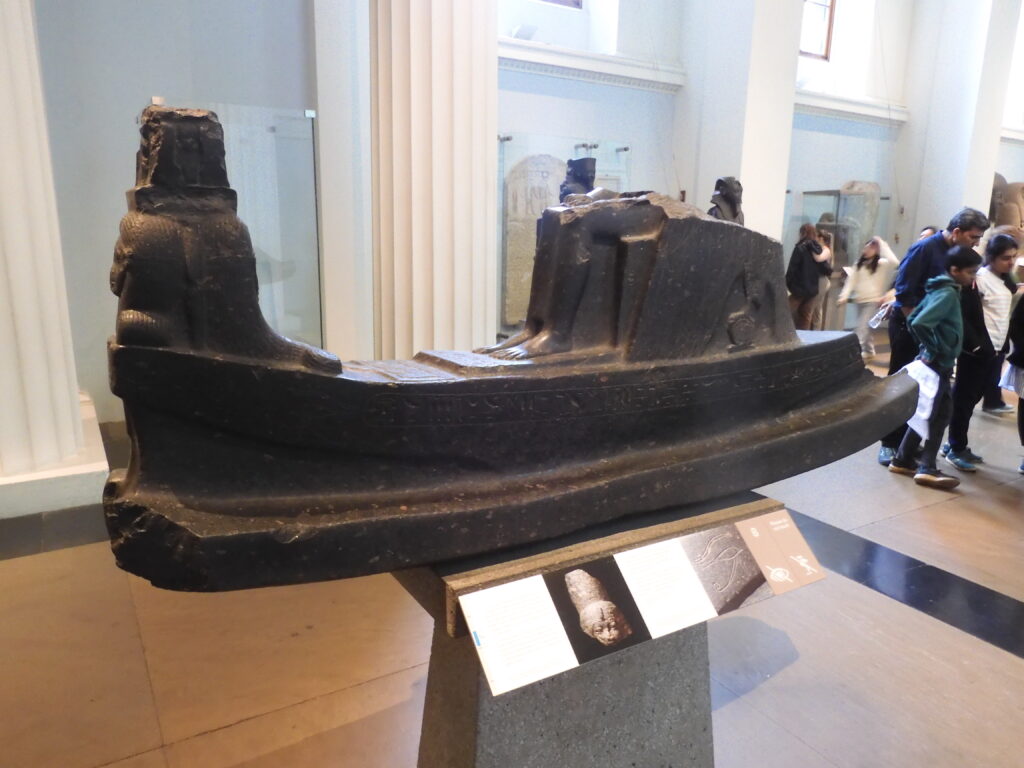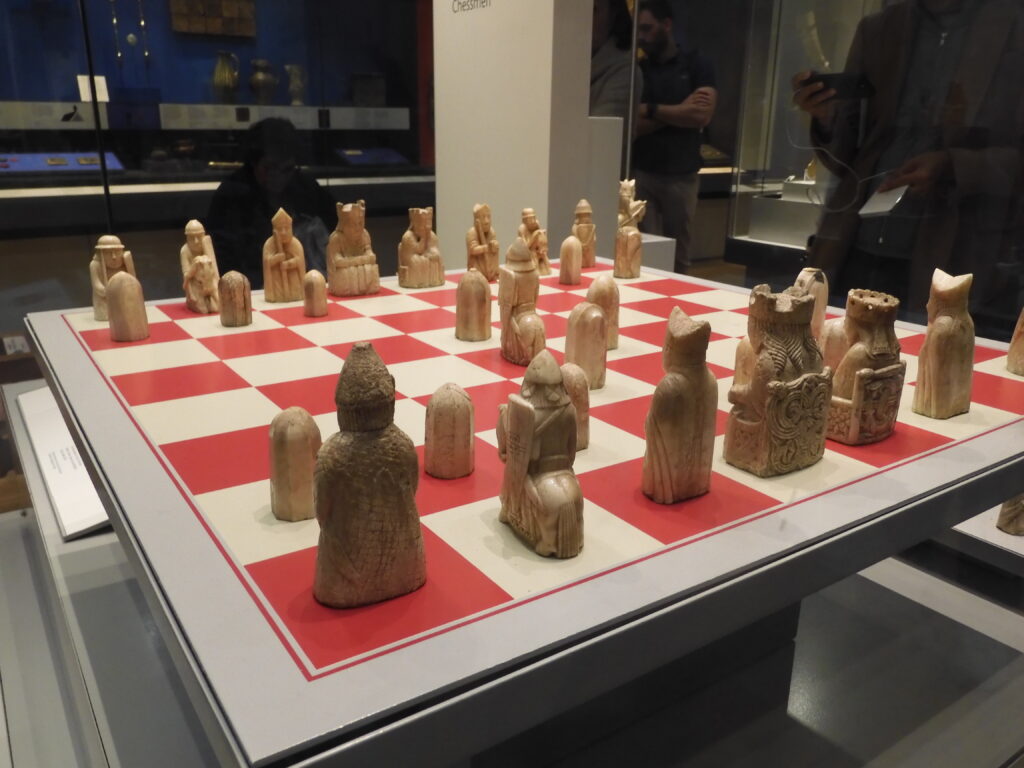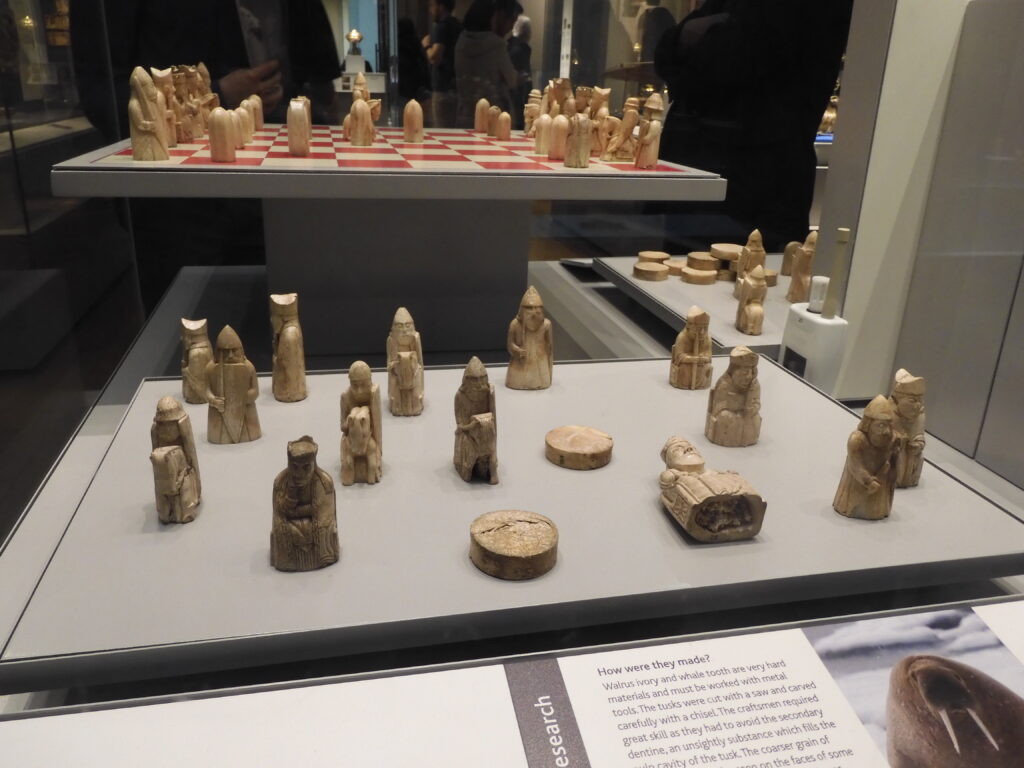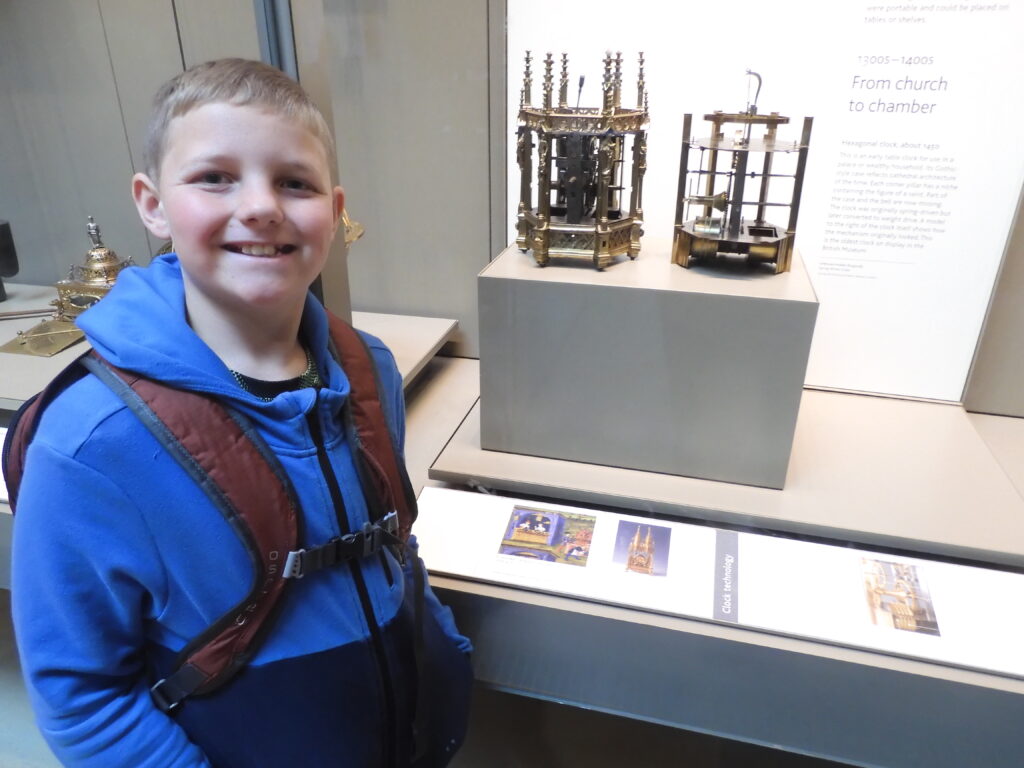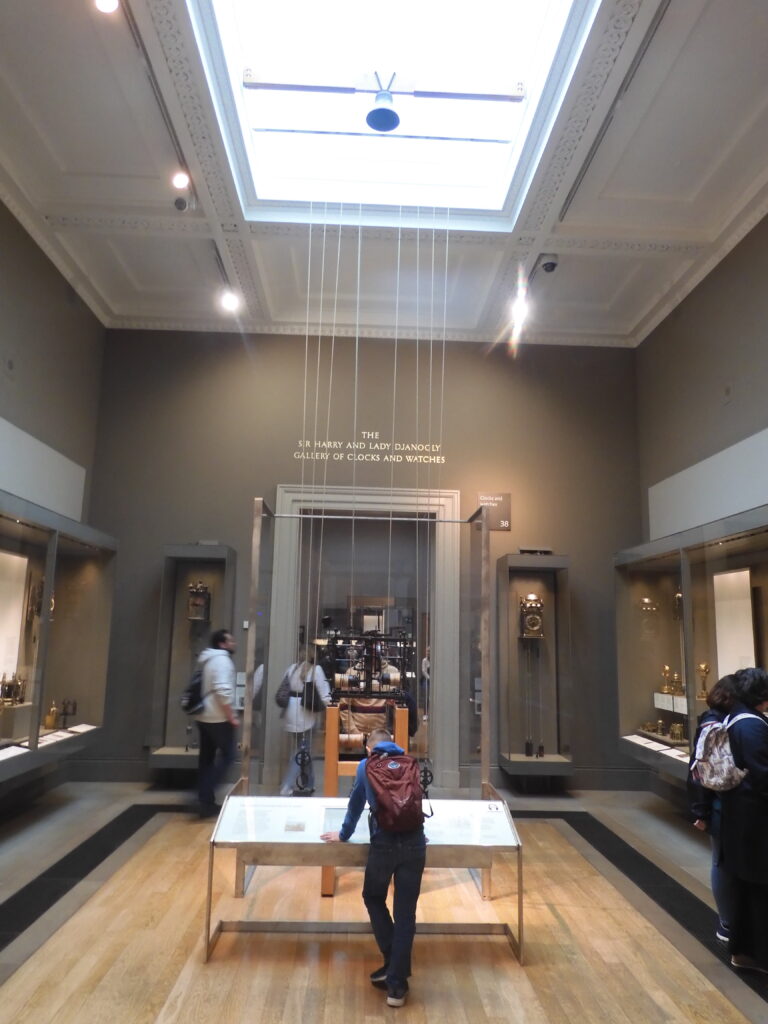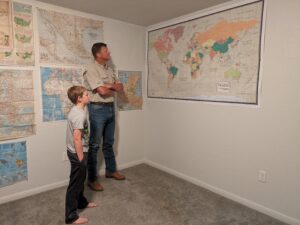London
Just the Highlights
Interestingly, when we were planning this trip, some members of our party were concerned there would not be enough things to do in the rural areas. “What am I going to do in Normandy for two days?” Stephanie mused, no doubt thinking there would be nothing there but the cemeteries and landing beaches she knew Caleb and I would want to visit. As it turns out, the ladies in our party are none too keen on spending time in the cities. “There are so many people,” Kimmy carped. “And so many smells,” Stephanie chimed in.
Since our Paris VRBO host canceled on us (more on that later in the accommodation section), we had some added flexibility in our schedule. The girls wanted to chop days off of both London and Paris. These were some of the most expensive stops anyhow, so we ended up eating one day of AirBnB in London and heading out to Courseulles-sur-mer, France after just two full days in London. I will note here that we have a lifetime booking average below 50% on VRBO. In other words, over half of the bookings we reserve and then confirm are canceled by the host before we arrive. We even had one canceled in Costa Rica after midnight on the night before we were to arrive, making it impossible to book at a different place. That is a story for another day.
Leaving London on Saturday instead of Sunday solved some of our logistical problems. We would not have been able to rent a car in France on Sunday, so arriving Saturday afternoon was preferable, and we would have a car for the time we were in the more rural part of France. For that matter, we could just drive the rental to Paris and save fares in the process. I stayed up late Thursday night and got it all arranged.
Well before that, however, we arrived in London on the high speed train, figured out the multiple components of the London metro system, checked into our room, and then ate right along the Thames River. By the time we did all of this, and I updated my office work, it was very late. I did not make it out to run on Thursday morning. I was, however, able to map out a Thursday morning sightseeing plan that prevented us walking any more than necessary to some major attractions all in the same area of town.
Our scheduling was centered around a timed entry to Westminster Abbey. Since Buckingham Palace was on the way, we went there first to witness the famous changing of the guards ceremony. We got a bonus as there was a practice happening for King Charles III’s upcoming birthday. We saw bands, cavalry, and several carriages in addition to the usual procedure. From there, we headed over to see Big Ben and the Parliament buildings. There was a protest going on blocking clear pictures of some of the buildings. A group representing Biafra was there attempting to get British citizens to write their MPs to encourage British support for an independent Biafra. Biafra is composed of an ethnic minority in the eastern portion of Nigeria. During the late 1960s, they operated as a partially recognized independent country, but were later fully absorbed by Nigeria following a Civil War. The Igbo minority blames British colonialism for the division and would thus like Britain to pressure Nigeria toward allowing an autonomous Biafran state.
During all of this, we had a few spare minutes and I needed to find some facilities to use. Public toilets aren’t as common as you might think in this part of London. In order to use one, I ended up adding a bonus stop to my agenda. Caleb went with me to the Supreme Court building where I was allowed to use the facilities, provided I told them I was visiting their displays in the basement. After passing through the metal detectors and relieving myself in their facility, I did take a few minutes to visit their informative displays and learned the basic structure and jurisdiction of the British court system. Britain’s complex web of dependencies, former colonies, and devolved areas make their jurisdictions a lot more complicated than they seem to need to be. For example, places like Jamaica (with no sovereignty obligation to GB) still appeal to the British crown for legal oversight and thus fall under the jurisdiction of crown courts. I was quite surprised to learn this. They also had a very nice model of HMS Victory in the basement. Caleb was most impressed by that. (Continued)
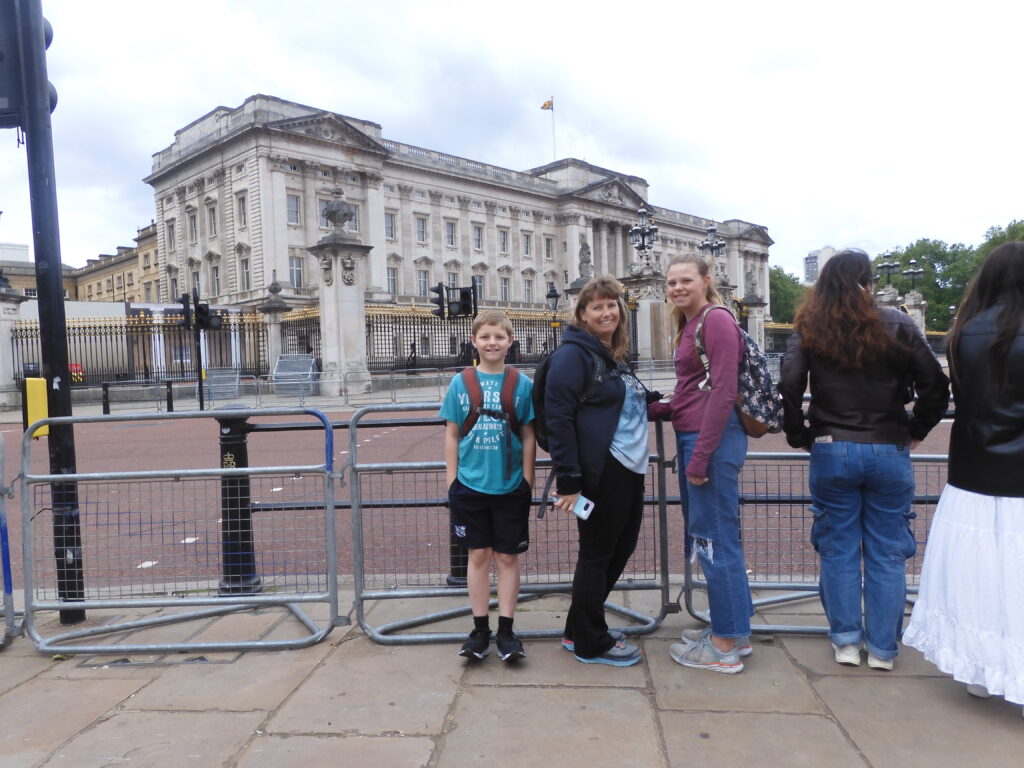
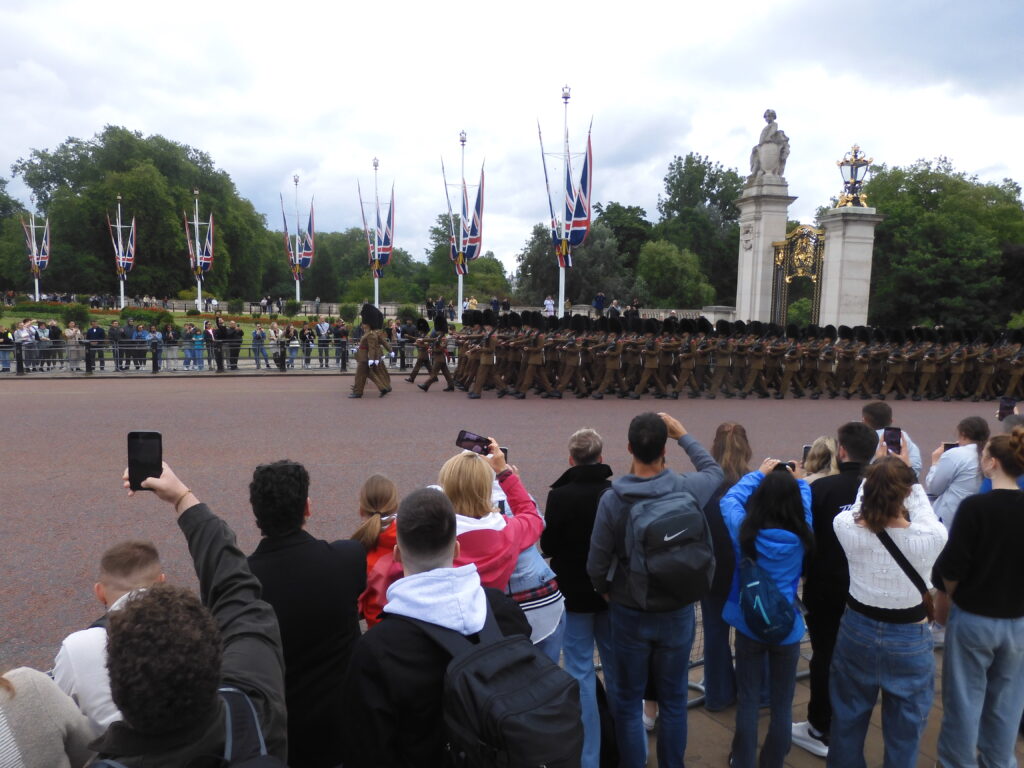
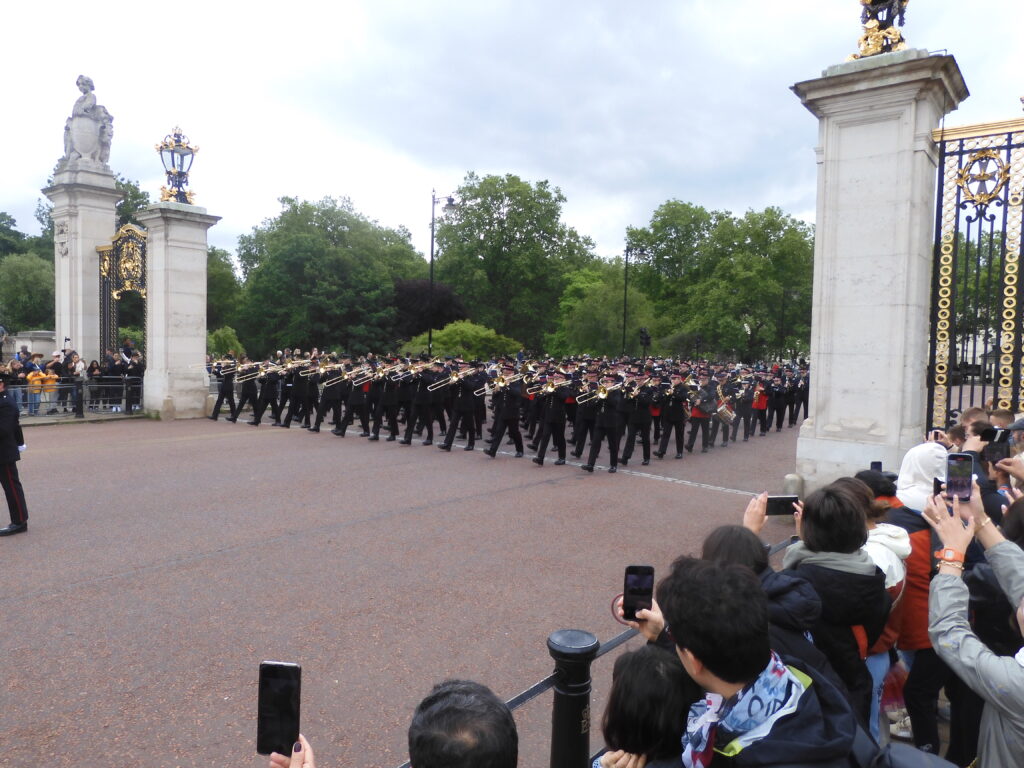
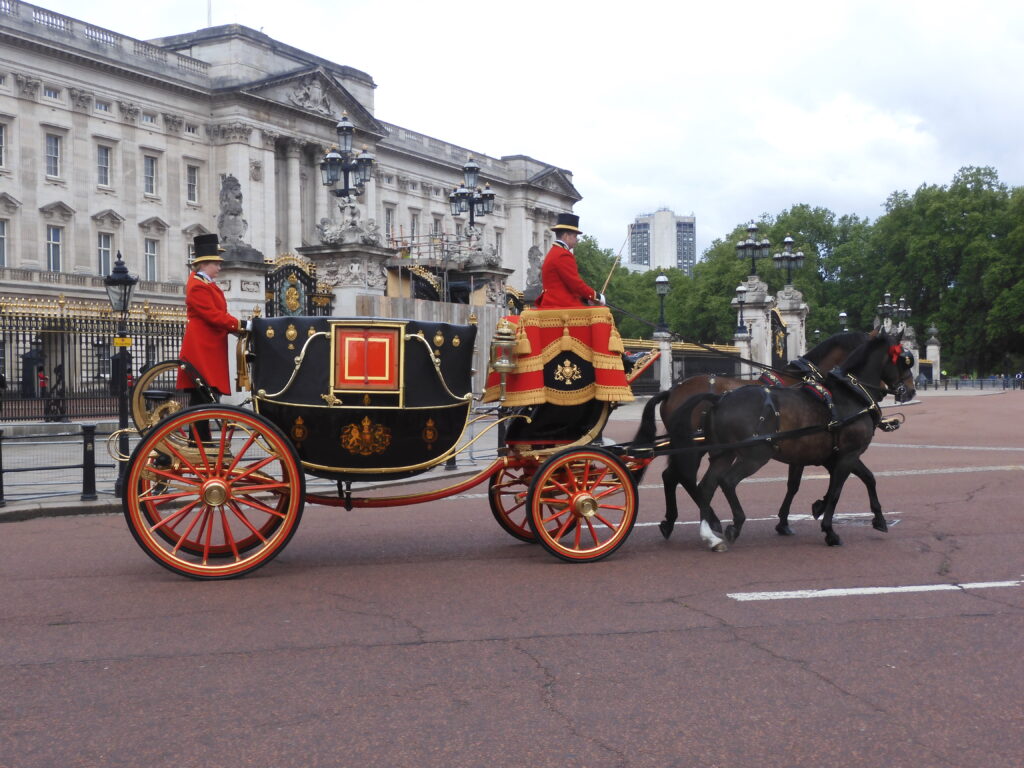
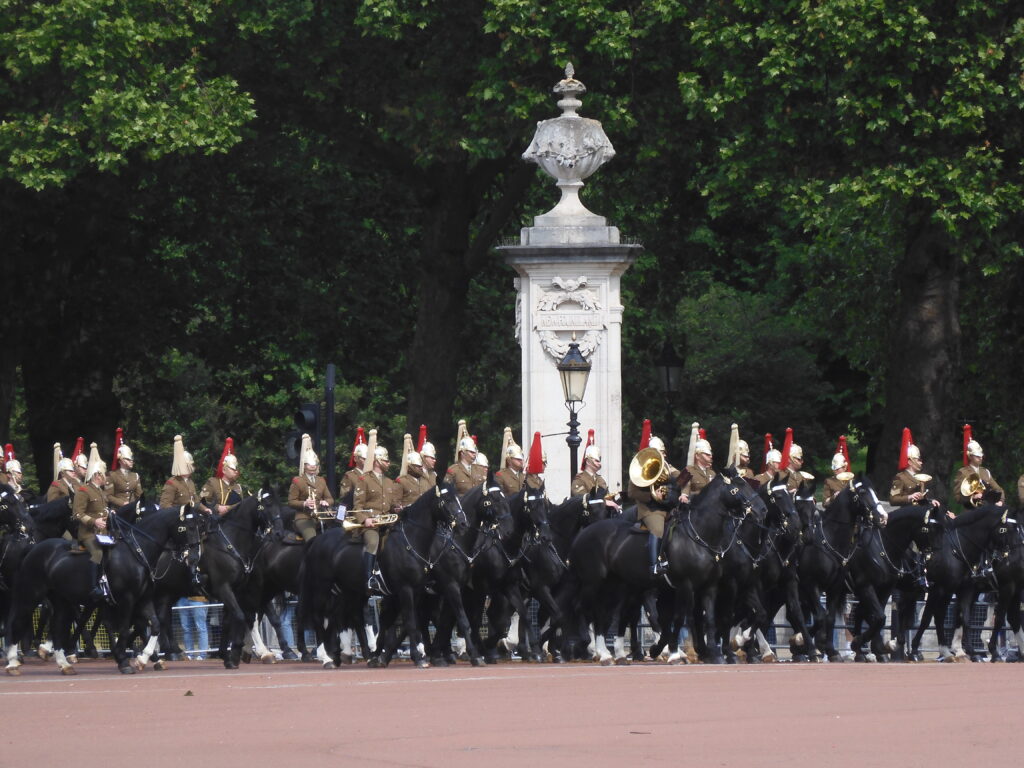
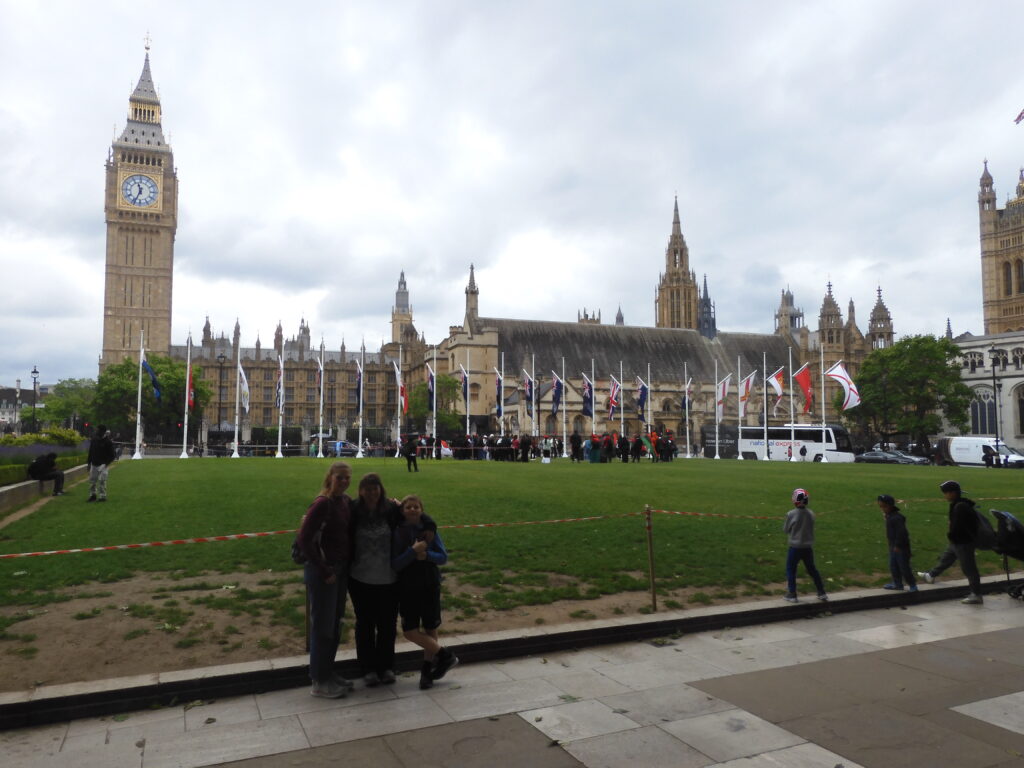
By the time I finished looking at the Supreme Court displays and the HMS Victory, it was close enough to our Westminster Abbey entry time that I figured we could probably get in. It turns out, these entry windows aren’t really enforced. They are just trying to encourage people to enter at staggered times. It was still busy. Westminster Abbey is England’s equivalent to El Escorial in Spain. It is a massive cathedral with many historical royals entombed there, as well as other dignitaries and even a corner for poets and writers. That’s something you won’t find in El Escorial! Another major difference between Westminster and El Escorial that ocurred to me after a conversation with Audrey is that English cathedrals tend not to have crypts like Catholic ones do. El Escorial has a crypt directly below the altar where the Hapsburg and Bourbon monarchs are laid to rest. Most of the markers in Westminster are stones in the floor. Major figures rest in above ground sarcophagi topped with effigies.
Richard III, Elizabeth I, Mary I, and Mary Queen of Scots are all buried at Westminster. There are also markers for Jeffrey Chaucer, C.S. Lewis, Winston Churchill, and Clement Attlee. There is a small chapel dedicated to the RAF that even has a couple of holes blown in it from WWII bombing. They just glassed those over and left them as part of the tribute. Although I have seen a lot of amazing cathedrals lately, I still found it impressive. It was the first church of this scale that Stephanie or Kimberly had been to. They were completely awed by its size. We got separated a couple of times, and I think they even got lost, to be honest.
We hiked from there to Trafalgar Square, which had a lot of construction going on around it making good pictures difficult. Kimberly was coming down with some sort of bug by this point, and Stephanie was pooped from walking around town (even though the total walking distance wasn’t over three miles at this point). We ended up hiring an Uber to get us over to the British Library. This saved no time, because of the traffic jam in this part of London, and set us back £20. It did, however, allow us to sit down while we were transported to the library. In the girls’ defense, it would have been a half hour’s walk. Had there been time to go to the British Museum Thursday, that could have broken up the walk, but the library was about all we had time for before we’d need to look for some food.
You may be thinking at this point, “Of all the things to see and do in London, why on earth did David want to go to the library?” For one thing, I knew Kimberly would be intrigued by a library visit, being an avid reader. More importantly, though, I knew the British Library to be more of a literary museum than just a place you go to borrow books. Most of the masterpieces we saw, they would not let you borrow. And… it was free.
I am certain they won’t let me borrow Codex Sinaiticus or Codex Alexandrinus. These are two of the three oldest nearly complete Bible manuscripts known to have survived from the ancient world, from the fourth and fifth centuries, respectively. For a bit more information on the amazing story of how Codex Sinaiticus came into the possession of the British Library, follow this (link). They have hand written music by Mozart and Handel. They had hand written manuscripts by John Lennon of “In My Life,” and Monty Python’s Inquisition skit. There were ancient sacred texts from Islam, Hinduism, and Zoroastrianism. They had several early folios of Shakespeare’s work. They had a Gutenberg Bible, and many other displays showing the developments in the history of book making and book art. It was really an amazing experience. Unfortunately, one of their prized possessions was not available to view – the Magna Carta.
By this point, I had had enough British food for a while, so we decided to eat at Libonaise Gourmet. I had a delicious roast lamb and a very good appetizer as well. It was a good day, and although I had to stay up a bit late reorganizing our rooms and transportation for the next week or so, I was able to get enough sleep to get out and run early on Friday morning. My exercise app, Strava even showed I PR’d my 5k that morning. Of course, that 9:52/mile pace was a “50s” PR, not a lifetime PR. That’s a pretty shameful running PR pace, for anyone not up on those things.
(Continued)
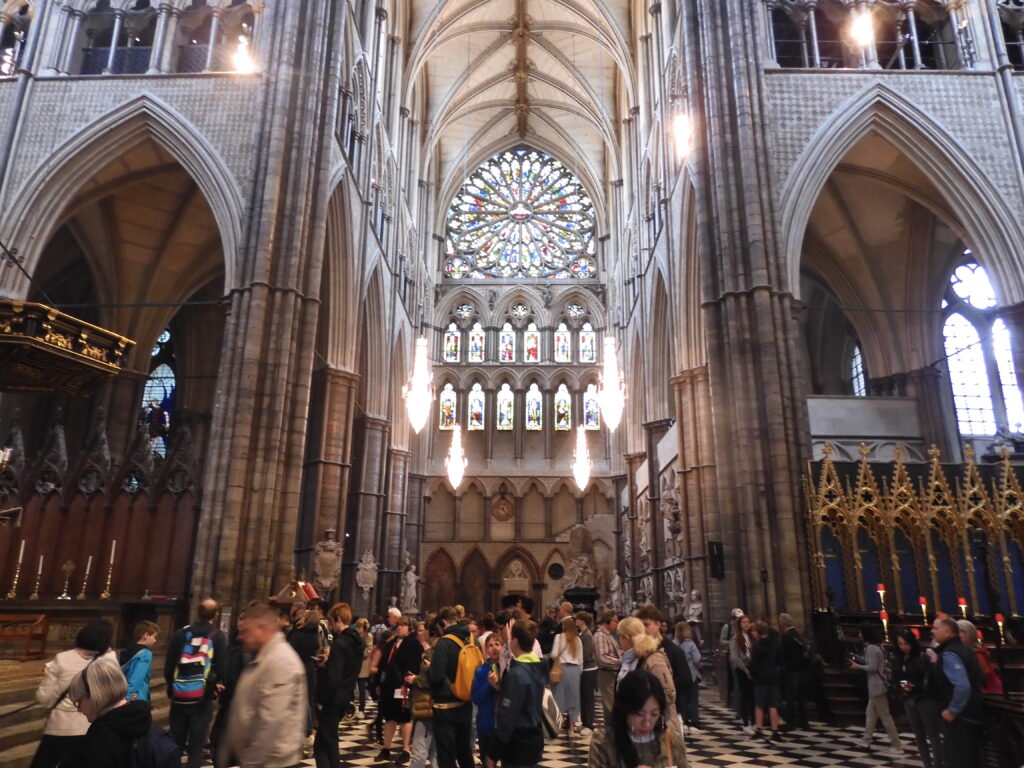
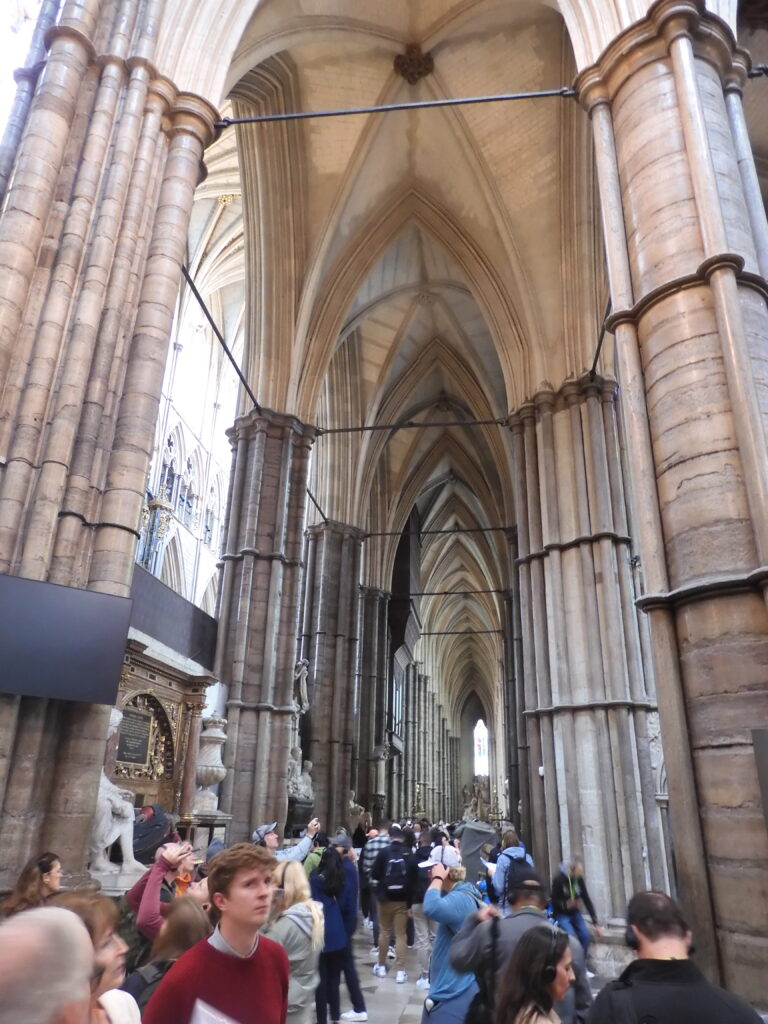

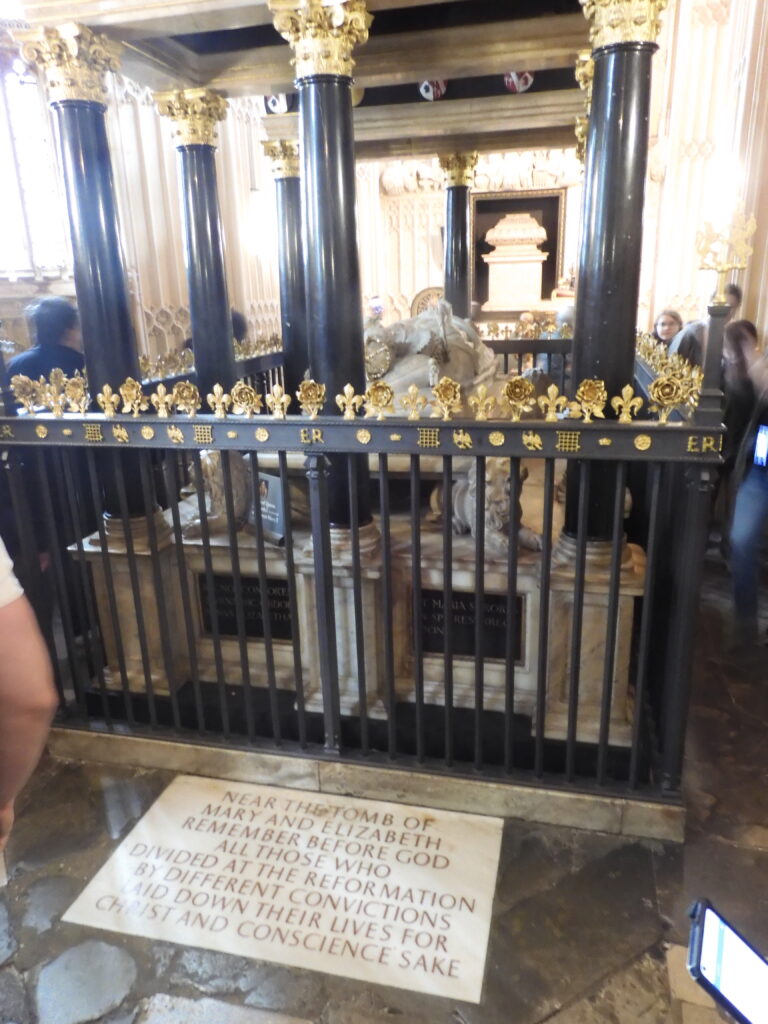

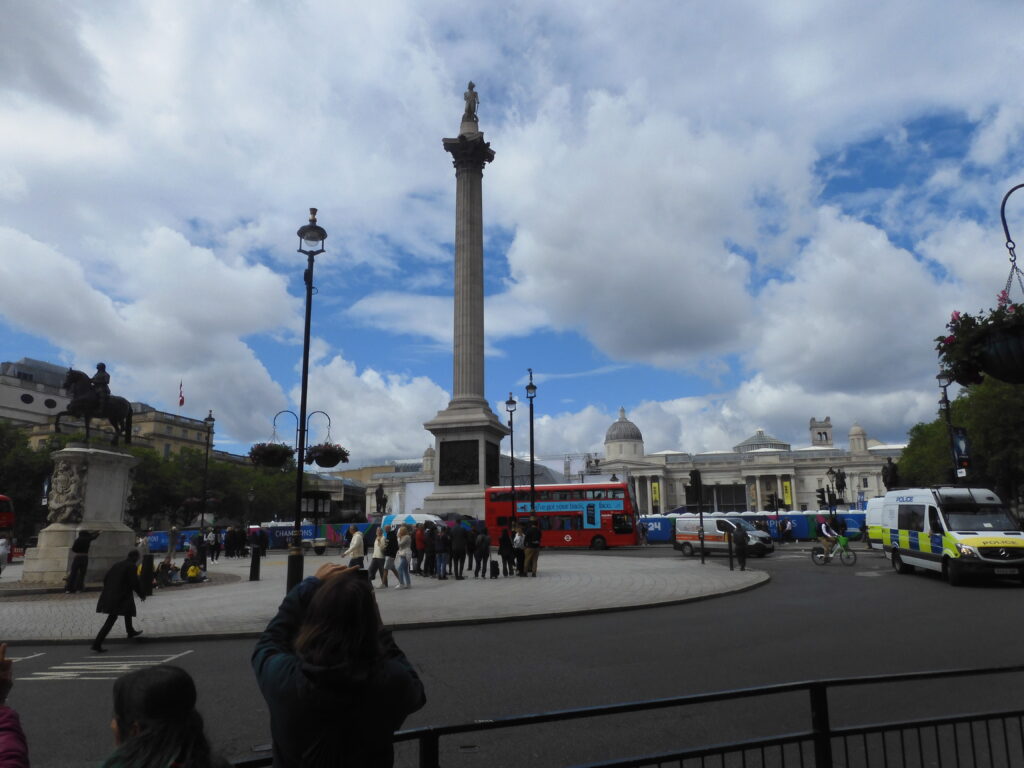
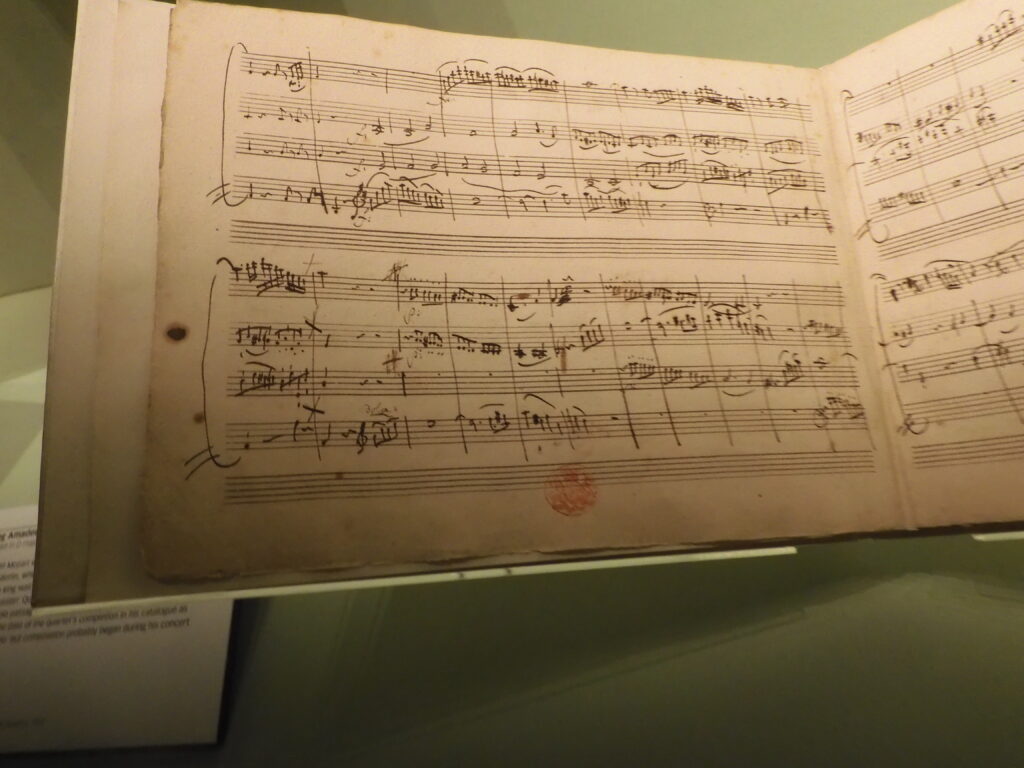
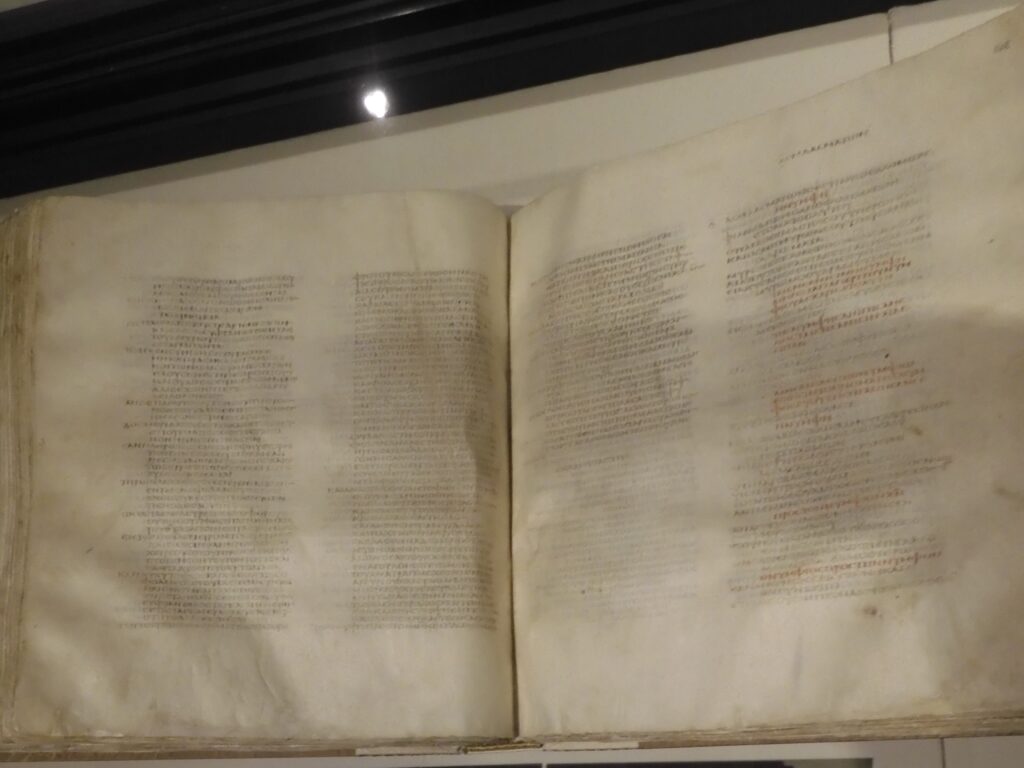
Kimberly was not feeling up to sightseeing on Friday, so she stayed in our AirBnB and made it her responsibility to keep Stephanie busy answering messages all day. I aimed that day’s activities a little more directly at Caleb. I had timed-entry tickets to the Tower of London, so we did that first. I knew from having been there previously this was a must see, and would take some time. Caleb very much enjoyed the Beefeater’s (Royal Bodyguard) presentation, the Tower guards, the crown jewels and many other sacred objects. The British crown jewels, as one might expect, are quite a bit more expansive than the Scottish ones held in Edinburgh Castle. The main building – the White Tower – holds several floors of armor and armaments. These displays apparently revolve at least to some degree, as the objects presented there were substantially different from what I saw on my visit in 2005. They have had quite a while since then to update them. We visited the on-site chapel which is still in use. Quite a few high level executions happened historically at the Tower of London. Some of Henry VIII’s wives were executed here. Lady Jane Gray, the nine day queen met her end here. There is also a tower where high level prisoners were held. The most impressive thing about this area was the graffiti. Some of the inmates had plenty of time to carve. There is a small display in another area with some interesting replicas of torture devices. Although these were not used all that often here, at different times in the past their role had been played up for tourists. They are still a very popular attraction, and Caleb did not want to miss them.
Next, we took a short walk over to see the Golden Hinde. This was the first British ship to circumnavigate the globe. This seemed like an especially appropriate stop for us. It is obviously a replica, but a fun and well done replica. They put on a show featuring crew members who discuss (in not too much depth) Drake’s importance and voyage. Caleb again greatly enjoyed this, and we got a picture by the sign indicating that the ship’s significance was a circumnavigation. It was a fun stop, and only took about an hour. This replica ship has itself been around the world twice. It was used to depict the Dutch ship in the 1979 filming of the Shogun miniseries. It has also been used in a few other older movies and TV shows. It was a bit disappointing, however, that despite constantly referring to Drake as a pirate the staff living historian crew members did not know what letters of marque were (link).
Last but definitely not least, we made our way via the London metro system to the famed British Museum. Amazingly, like the British Library, you can visit the British Museum free of charge. It is open late on Friday evening, and has a few free talks on that night as well. They have amazing collections of artifacts from around the ancient world, though their collections are gradually diminishing. This is almost entirely a historical museum. They have an acute awareness of colonialism and a sense of guilt about how many of their artifacts were procured (see info about Codex Sinaiticus). It could easily be argued that as recently as the late 19th century, many of the artifacts collected and preserved by the British Museum would likely have been lost either to destruction or private collections without British influence.
I was glad to see what they still had. One obvious highlight was the Rosetta Stone. They have a collection of sculptures from the Parthenon. There are huge Egyptian statues of gods and busts of Ramses II and Amenhotep III. They have the larger collection of Lewis Chessmen. They have a moai figure (Easter Island head). They have a room full of medieval clocks. They have a massive totem pole. They have second century Roman sculptures. You really can just OD on amazing historical artifacts. We had had a long day by the time we arrived. There were still several hours during which the museum would remain open due to their special Friday hours. We saw as much as we could squeeze in before Stephanie’s relatives arrived and I felt compelled to join her in visiting with them.
That really was the thing to do by this time of day. I had walked several miles already and we were all hungry. Stephanie found her grandfather, Earl’s long lost birth relatives, and they got a table at a local pizza joint while Caleb and I squeezed in a few more minutes looking at artifacts before we hopped over to Pizza Express to visit and make connections while we refueled. Earl’s family members had made a long trip themselves to share a meal with us that evening in London. Taking a few minutes out of our London stay to share some time with them was the least we could do.
There are many more things to do in London. One could easily fill up a week visiting the city’s best attractions. But our crew was “citied out,” and ready for a more relaxed pace. Besides, if we didn’t leave Saturday, we would not be able to find a car prior to Monday at the earliest. I rose early Saturday morning, and hopped on the Victoria line one last time en route to the bus station. Everything seemed on track for a smooth transition to my first visit to France. Things aren’t always what they seem…
